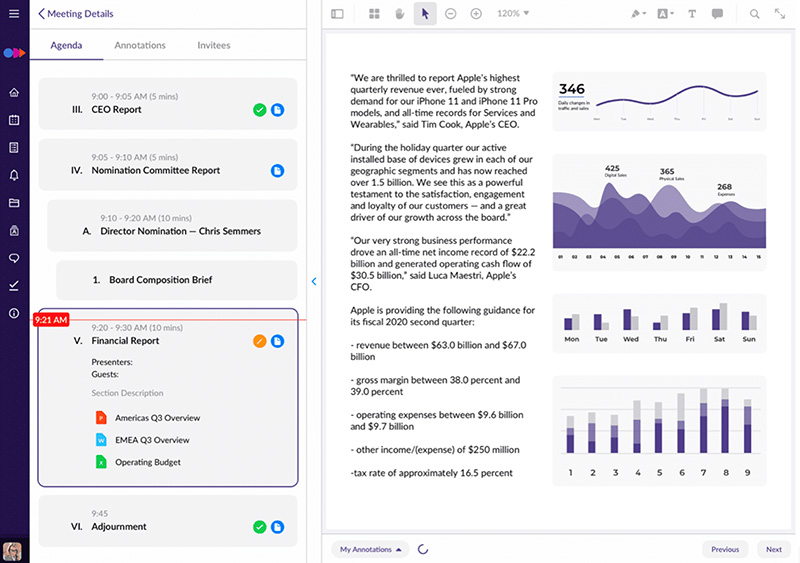
Opinions expressed in AGB blogs are those of the authors and not necessarily those of the institutions that employ them or of AGB.
Technology is transforming the work of the board. It’s streamlining meeting preparation, enabling better engagement of board members, providing data to help shape efficient meetings, simplifying record-keeping, providing enhanced security, and more. Below are nine ways technological advancements are enhancing the work of boards.
1. Collaborative Agendas
Board technology provides a designated and accessible shared space for agenda creation and collaboration. Agendas can be shared in advance of board meetings, with plenty of time to incorporate recommended changes in real time. Board members can readily see the amount of time that will be allotted to each topic, who is facilitating the topical discussion, and pre-read reference materials that are conveniently linked from the agenda.
2. Course Correction in Real Time
It’s easy to get off schedule when robust board discussions are taking place. This can lead to important topics not receiving the time and attention they deserve. Board technologies offer agenda-tracking features that show how board meetings are pacing and break down exactly how much time is spent on given agenda items. Not only does this intel allow for course correction in real-time, but it also provides helpful data to consider for future meetings to ensure balance.

Sample agenda tracking feature in AGB OnBoard
3. Meeting Ratings
Understanding board members’ perceptions of meetings is vital for continual improvement as well as for enhancing satisfaction and engagement of board members. Feedback features within board meeting technologies enable request assessments from participants after each meeting to highlight areas for improvement.
4. Efficiency
Board members are busy individuals with numerous competing commitments. With a centralized digital location for all board materials, the entire board meeting process becomes more efficient. From creating agendas, uploading materials, distributing agendas and pre-reads in advance of meetings, communicating post meeting, and providing a central place for follow-up notes, board meetings are streamlined and well run.
5. Safe and Compliant Records
Compliant and secure record-keeping is paramount to good governance. Board meeting technologies can provide a record of meeting minutes that are gathered and approved within the platform, eliminating the need for last-minute scrambling. These technologies also prevent mistakes such as accidental forwarding of confidential information or using personal emails for board work.
6. Enhanced Communication and Insights
Features such as secure messaging, sharable annotations, and targeted announcements with board meeting platforms streamline communication and advance the work of the board. Having data such as meeting reviews, board member engagement, and even board composition at your fingertips provides insights needed to make decisions about where and how to make governance improvements.
7. Benchmarking
Curious about how the governance of other institutions and foundations operates? Board meeting technology can help guide your board structure and meeting processes with benchmarks on meeting cadence, board size, and committee structure of peer organizations.
8. Agility
When COVID-19 hit, boards had to quickly organize and operate with agility. The same is true in any crisis. Board technologies enable quick and secure dissemination of information as well as integration with virtual meeting platforms such as Zoom. This streamlines the process of gathering and getting board members up to speed quickly so they come to meetings ready to tackle the challenges at hand.
9. Data-Based Decisions
Analytics embedded in board meeting technologies enable insights on when board books are read, where annotations are made, and what sections are receiving the most attention from the board. They also provide records of board meeting attendance and engagement. These data can inform decision-making for improvements and reveal topics that require extended discussion.
The Bottom Line
Hundreds of higher education institutions and foundations use the AGB OnBoard board meeting intelligence platform to enhance governance, improve decision-making, and uncover key insights. The platform provides all nine of the features and efficiencies outlined above, and much more. To learn more and schedule a demo, visit AGB.org/Onboard.
Matthew Maxwell is a board solution consultant at AGB OnBoard. He has worked with OnBoard for over a decade and helped facilitate the collaboration with AGB.



